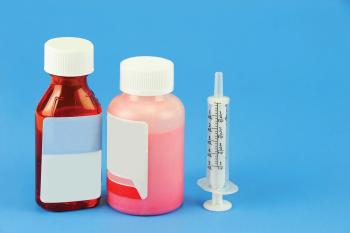Editor’s Note: This article was also published in Pharmaceutical Technology Europe’s September 2020 APIs, Excipients, and Manufacturing supplement.
- Pharmaceutical Technology-09-01-2020
- Volume 2020 Supplement
- Issue 4
Key Considerations When Repositioning a Known Drug for Inhalation Therapy
Creating an inhaled formulation is one way in which improved efficacy or added value can be achieved in projects to repurpose or reposition existing drugs.
Repurposing and repositioning has become a common way for drug companies to market new drug treatments. While in some instances the strategy is used to manage the lifecycle of a drug, in many cases, an old drug can have a new use for an otherwise poorly served disease. These tactics are common for rare diseases where the potential patient population is small, as well as for neglected diseases where there are few commercial drivers for de novo research.
Not all repurposing projects involve taking a drug originally designed for one disease and finding another where it has efficacy. There can be benefits for patients in creating novel formulations that allow for a different route of administration; this can improve delivery or compliance and may also permit the treatment of further conditions. Alternately, the new formulation may be administered via the same route with changes to or improvements in the product profile that enable extended release delivery and a reduced dosage burden on a patient. Even if lifecycle management is not the key driver, intellectual property (IP) coverage is likely to be extended through these means.
Both repurposing and repositioning projects offer the prospect of a faster route to market than a discovery project for a new molecule; and, if the drug is already on the market, most of the necessary safety trials will have been completed. For programs that were never marketed for commercial reasons—or withdrawn and halted for a lack of efficacy in late-stage clinical trials—some or all of this work may well have been done, again reducing the potential time to bring a resurrected project to market.
Preclinical safety testing for a repurposed or repositioned drug will, therefore, be limited to any that are specific to a new mode of delivery and dosage level. Whereas a novel API or biologic typically takes 10–15 years to go from initial idea to marketing approval, the repurposing or repositioning program can commonly be completed in less than 10 years or faster. The reduction in time required brings cost savings.
Advantages of inhaled drugs
Inhalation as a route for administration is familiar for diseases and conditions that directly affect the lungs. For example, asthma patients rely on drugs delivered by some form of inhalation device including the beta-agonist albuterol (also known as salbutamol) for treatment of and steroids for the prevention of asthma attacks. An increase in the number of diagnoses of chronic obstructive pulmonary disease (COPD) also means there is an expanding market for inhaled medications.
Inhaled delivery also offers opportunities to develop combination products. By dosing two APIs together, there are potential benefits both in efficacy and compliance. GlaxoSmithKline received FDA approval in 2017 for an inhaled combination asthma product, Trelegy Ellipta, which treats COPD patients with a corticosteroid, a long-acting muscarinic antagonist, as well as a long-acting beta agonist at the same time. While this presented a significant challenge to formulators, it offers benefits to patients with a reduced burden on administration.
There are benefits in using the lungs for systemic drug delivery. Some inhalation-delivery drugs on the market include antibiotics such as aztreonam and tobramycin, and levodopa, used to treat “off” episodes in Parkinson’s disease. Two inhaled insulin products have also reached the market, although their take-up has been limited. MannKind’s Affrezza, is still available, after Pfizer discontinued its product, Exubera.
Inhaled delivery offers multiple advantages over injected or oral dosing. Perhaps the most important characteristic is the fast onset of action: a drug absorbed deep within the lungs is taken up by the bloodstream almost as quickly as one that is injected subcutaneously (1). This speed of delivery raises the potential for other time-sensitive applications such as pain relief, migraine treatment, or even schizophrenia, where extremely rapid efficacy would be beneficial.
Importantly, if a drug is inhaled rather than taken orally, it avoids the first-pass metabolism of the liver. This can prevent the formation of problematic metabolites, which can cause undesirable side-effects. It can also be advantageous if the drug is susceptible to being broken down by digestive enzymes in the gut (2).
Changing the type of device used to administer an inhaled product can also bring benefits to both patients and innovators, such as moving from a standard metered-dose inhaler (MDI) to a dry-powder inhaler (DPI) or smart nebulizer. This change can offer IP advantages, as the device is part of the drug’s approval, and therefore makes it less susceptible for generic competition. Such a change may also make it easier to reposition a drug for a different patient population, such as children.
The potential for greater compliance is also a factor in changing the device used to administer an inhaled drug. The accurate synchronization of breathing and dose administration can be difficult with an MDI for some conditions and age ranges; if a patient fails to do this properly, the benefit of the drug may not be felt, leading to discontinuation of treatment. A device that removes this requirement for careful breath and dose synchronisation has compelling commercial advantages.
Justifying a need
Regulators are increasingly taking a negative view of repurposed projects that offer no benefits other than IP extension. Rather, they expect there to be some form of therapeutic rationale, whether this is a new therapeutic application, or a method that proves easier or more effective to deliver the drug.
Other benefits are possible. A new delivery route can allow tight therapeutic windows to be met, and attributes such as safety, tolerability, and potency conserved while giving a faster onset of action. An inhaled product can replicate the pharmacokinetic profiles that are achieved via injection. Mucosal vaccination is another intriguing prospect being evaluated within the industry (3).
However, for innovators, there will always have to be a compelling commercial story with any program. There are many examples of where this has been successful, and drugs that have been repositioned in one form or another now represent about one third of all new drug products to reach the market, representing $500 billion in sales annually (4).
But where is the potential clinical need for inhaled products? Several indications still represent significant unmet medical needs, particularly asthma and COPD, which together comprise more than half the whole market value for inhaled products, and this is growing. But they are far from alone.
Other diseases of the lung where treatments are in short supply include pulmonary hypertension and idiopathic pulmonary fibrosis. And although there have been significant advances in treatment for cystic fibrosis (CF) in recent years, these are only effective in a small sub-population of patients. Despite this, CF is outstripping the market with an annual growth rate of 10%, against a background of 6% growth overall, according to Evaluate Pharma.
The patient population in rare diseases may be relatively small, but a successful product will be able to command a premium price, as well as the boosts— abbreviated approval processes, fast-track designation, fee waivers, and tax credits—that developers can receive if a project is given orphan drug designation. A product may also be given extended exclusivity, which is important for a repurposed product.
DPIs and nebulizers represent not justenabling technologies that allow a drug to be inhaled but are also an important part of the drug’s IP protection and, therefore, future revenues. DPIs can be easier to use than traditional MDIs, and modern nebulizers are not only smaller and easier to use than older models, but can also have smartphone connectivity built in. The ability to monitor treatment that this confers can be invaluable, not only for compliance, but also allowing physicians to keep track of how well the treatment is working.
Modern nebulizers that are breath-activated waste less drug, as they will only nebulize when the patient is actively breathing in. With connectivity technology—such as Bluetooth—featured in newer devices, flow and volume controls ensure the nebulized aerosol meets a specific inhalation profile, or can be directed to the correct part of the lung.
Project selection: What can be repositioned or repurposed?
Every company will have its own proprietary method for determining which potential repositioning and repurposing projects are worth pursuing. While the intricacies vary from company to company, the broad principles are the same: assess the clinical need, the market size, and revenue versus development costs.
The first step in the screening process is to look at the clinical needs the repositioned/repurposed product would meet and the potential for filling a gap in the current market. There should be a compelling scientific rationale for the new application. If it is fulfilling a true unmet medical need, then the project passes on to the next stage. If the patient population is sufficiently large, and the disease sufficiently widespread, there may be room in the market alongside existing products, particularly if there is the prospect of an improved delivery process.
For those projects determined to have clinical potential, the commercial opportunities are then assessed. This includes deciding whether it would be sufficiently well differentiated from any competition, and how crowded the marketplace for that indication currently is. While the product may succeed, it may take too long to recoup the costs of development. The projected timescale for the development should also be considered; lengthy development timelines will have an impact on the overall cost of the project.
Next, available technical advantages should be assessed. Is there suitable technology in-house that will benefit the project? Or is there some means of gaining measurable improvements in functionality? Proprietary technology will make it more resistant to competition if it reaches the market and offers significant commercial advantages.
Finally, the feasibility of the project should be considered, as well as the capability within the company to succeed. Inhaled products are not easy to develop; careful due diligence and research are needed to determine whether a product idea is feasible.
External advisers and key opinion leaders can be invaluable. Do they have a view about whether it will work? Can they foresee any specific challenges arising in the development process? And do they think the project might meet the criteria for some form of abbreviated regulatory pathway?
Undergoing a formal assessment process is important if the chances of a project succeeding are to be maximized. This is important for inhaled products, where the technical considerations, in particular, will play a major role in the success of a project, both technically and commercially
References
1. J.S.Patton and P.R.Byron, Nature Reviews Drug Discovery 6, 67-74 (2007).
2. B.J.Lipworth, Thorax Feb;50 (2) 105-110 (1995).
3. J.S.Patton et al., Clin Pharmacokinet 43 (12) 781-801 (2004).
4. S. Naylor, et al. Drug Discov. World, Spring Edition 2015.
About the Author
Geraldine Venthoye is the executive vice president of product development at Vectura.
Article Details
Pharmaceutical Technology
Supplement: APIs, Excipients, and Manufacturing
September 2020
Pages: s14-s16
Citation
When referring to this article, please cite it as G. Venthoye, “Key Considerations When Repositioning a Known Drug for Inhalation Therapy,” APIs, Excipients, and Manufacturing Supplement (September 2020).
Articles in this issue
over 5 years ago
Tracing the Supply Chainover 5 years ago
Suitable Sterility Methods for Dimethyl Sulfoxide USP, PhEurover 5 years ago
Making the Ideal Dosage Formover 5 years ago
Optimizing Loss-in-Weight Feeding of Poorly Flowing Materialsover 5 years ago
Solid-Dose Continuous Manufacturing Presses OnNewsletter
Get the essential updates shaping the future of pharma manufacturing and compliance—subscribe today to Pharmaceutical Technology and never miss a breakthrough.





